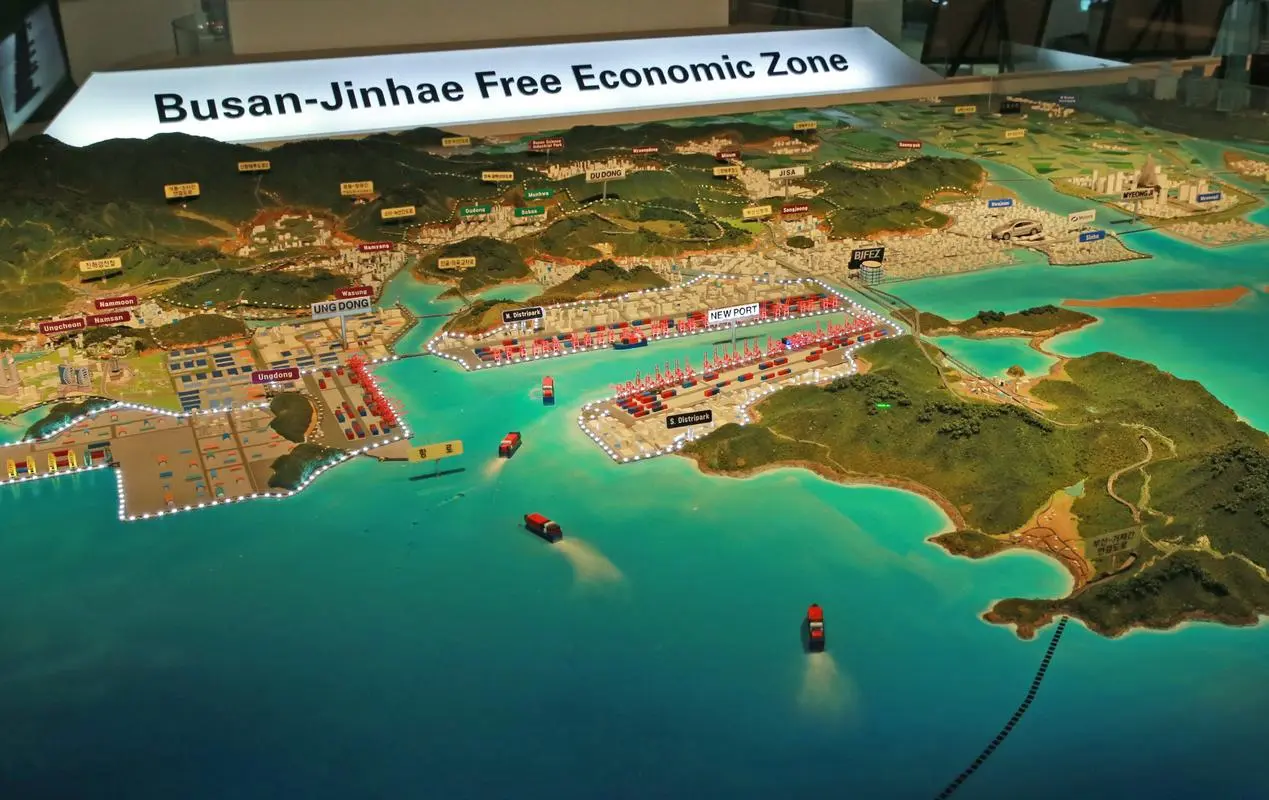Busan Zhenhai Economic Free Zone

Busan Zhenhai Economic Free Zone is an economic free zone designated by the Korean government on October 30, 2003 in order to improve the business environment of foreign-invested enterprises and the living conditions of foreigners. This area is located around Busan Port and Zhenhai Port, and is developed based on the port to attract foreign investment and promote economic development.
Geographical location and scale
The Busan Zhenhai Economic Free Zone includes five areas: Xingang, Zhishi, Mingzhi, Xiongdong, and Toudong, with a total area of 83.1 square kilometers (25.14 million square meters). The region is connected to Busan Port, which ranks fifth in global cargo throughput, with a new port of 45 cabins and superior geographical conditions and logistics facilities.
Industrial layout and development goals
The development goals of Busan Zhenhai Economic Free Zone include building a world-class logistics and commercial center. The region focuses on developing logistics circulation, cutting-edge industries, international business, and leisure tourism bases, and building cutting-edge transportation spare parts industries and world-class tourism and leisure bases. In addition, foreign educational and medical institutions have been established in the region, providing international labor systems and foreign exchange capital market services.
Policy support
The South Korean government is vigorously promoting the construction of economic free zones through incentive policies such as tax reductions, financial support, relaxed regulation, and one-stop services. Foreign investors who settle in can enjoy greater freedom in their business operations and enjoy preferential policies such as tax reductions and funding support.
Historical background and current situation
Since its establishment in 2003, Busan Zhenhai Economic Free Zone has attracted a large number of foreign investment and enterprises to settle in, becoming an important base for the South Korean government's Northeast Asia economic center strategy. This region has ranked first in the performance evaluation of the South Korean Economic Free Zone for two consecutive years, demonstrating its strong attractiveness and development potential.

